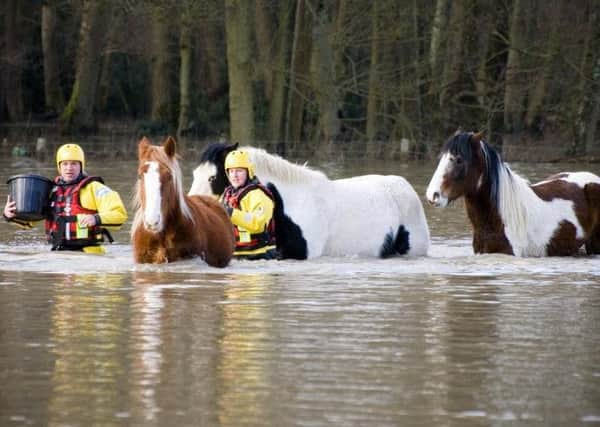RSPCA issues advice for pets after weather warning


With the current heatwave set to finish this week and thunderstorms sparking a potential risk of flooding, the RSPCA has issued some advice on how to protect animals from the heavy downpour.
The Met office has issued a warning that from today (Wednesday) into Thursday there is the potential for intense thunderstorms and torrential showers.
Advertisement
Hide AdAdvertisement
Hide AdRSPCA companion animal scientist Alice Potter said: “This changing weather is really keeping us on our toes - one day we are giving advice on keeping animals cool and the next we are talking about flooding but it’s best to be prepared.
“Pet owners should keep an eye on the weather forecast in their area and plan ahead to make sure their animals are safe.
“It might be necessary to keep cats inside if the winds become very extreme. Dog owners should plan walks so that the extreme weather can be avoided. Two or three shorter walks may be a better option to avoid being out in the wet weather for a long period of time.
“We can all take simple steps to help animals during extreme weather however our inspectors are on-call around the clock so they can help if the worst should happen.”
Advertisement
Hide AdAdvertisement
Hide AdThe RSPCA is part of Defra’s National Flood Response Team and it has about 100 officers trained and equipped to deal with flood stricken animals and a fleet of 35 inflatable boats.
It has issued a handy guide to help people prepare in case of extreme weather and flooding and get animals to safety more easily.
Before it floods:
Plan your escape route.
Ensure you can be contacted in an emergency. Keep phone numbers of people who can help move your animals.
Pets:
Make sure you have suitable carriers for small animals.
Keep a supply of food for evacuation.
Bring all small animals inside and, if possible, upstairs.
Move food, bedding and fresh water somewhere dry.
Keep favourite toys dry, these may comfort your pet.
Advertisement
Hide AdAdvertisement
Hide AdPut important documents such as microchip numbers, vets and vaccination details in a sealed bag, along with a photo of your pet in case they get lost.
Small animals must be transported in suitable carriers, birds in a secure cage and dogs using sturdy leashes.
Remember to take your animals’ food, water, bowls and bedding with you.
If you have to leave your animals behind, leave them inside an upstairs room with plenty of food and water. Leave notices on the outside doors to say there are animals inside and contact us or your local Flood Warden immediately.
Livestock/horses:
Advertisement
Hide AdAdvertisement
Hide AdEnsure any extra gates you need for emergency access are fitted and attach your details on field gates.
Animals will need to be moved to high ground early.
Make sure you have emergency feed and fresh water supplies.
If you haven’t already, move animals to high ground if the escape route is accessible .
Make sure you have emergency feed and fresh water supplies.
Act early:
Floodwater rises rapidly. If there is a flood warning don’t hope for the best, act early.
If disaster strikes:
Put your flood plan for your animals into action.
Don’t put your own or another life in danger to attempt an animal rescue.
For information and flood warnings call Floodline on 0845 988 1188, or visit www.environment-agency.gov.uk/floodIn an emergency contact the RSPCA on the 24-hour cruelty line on 0300 1234 999.